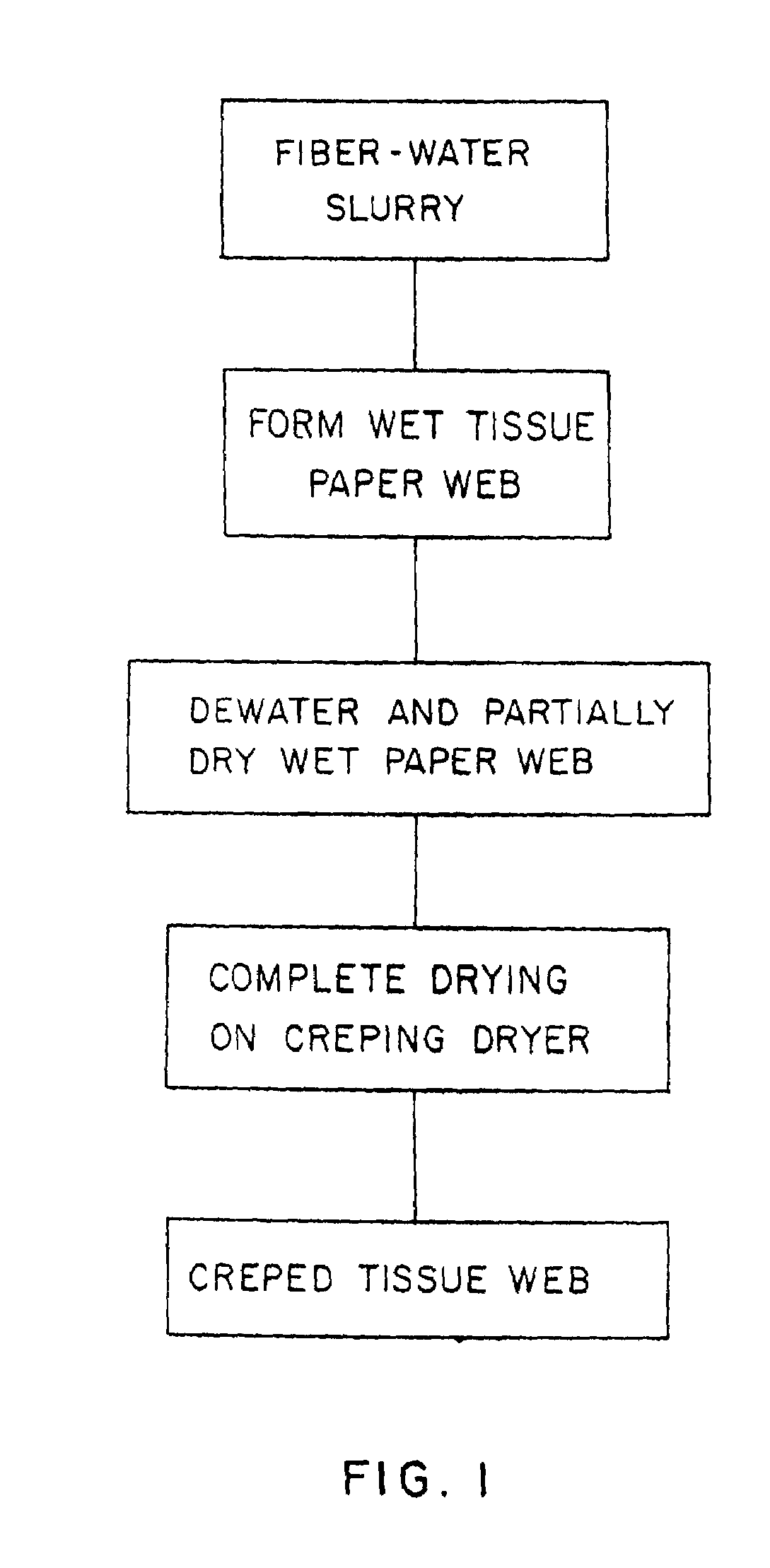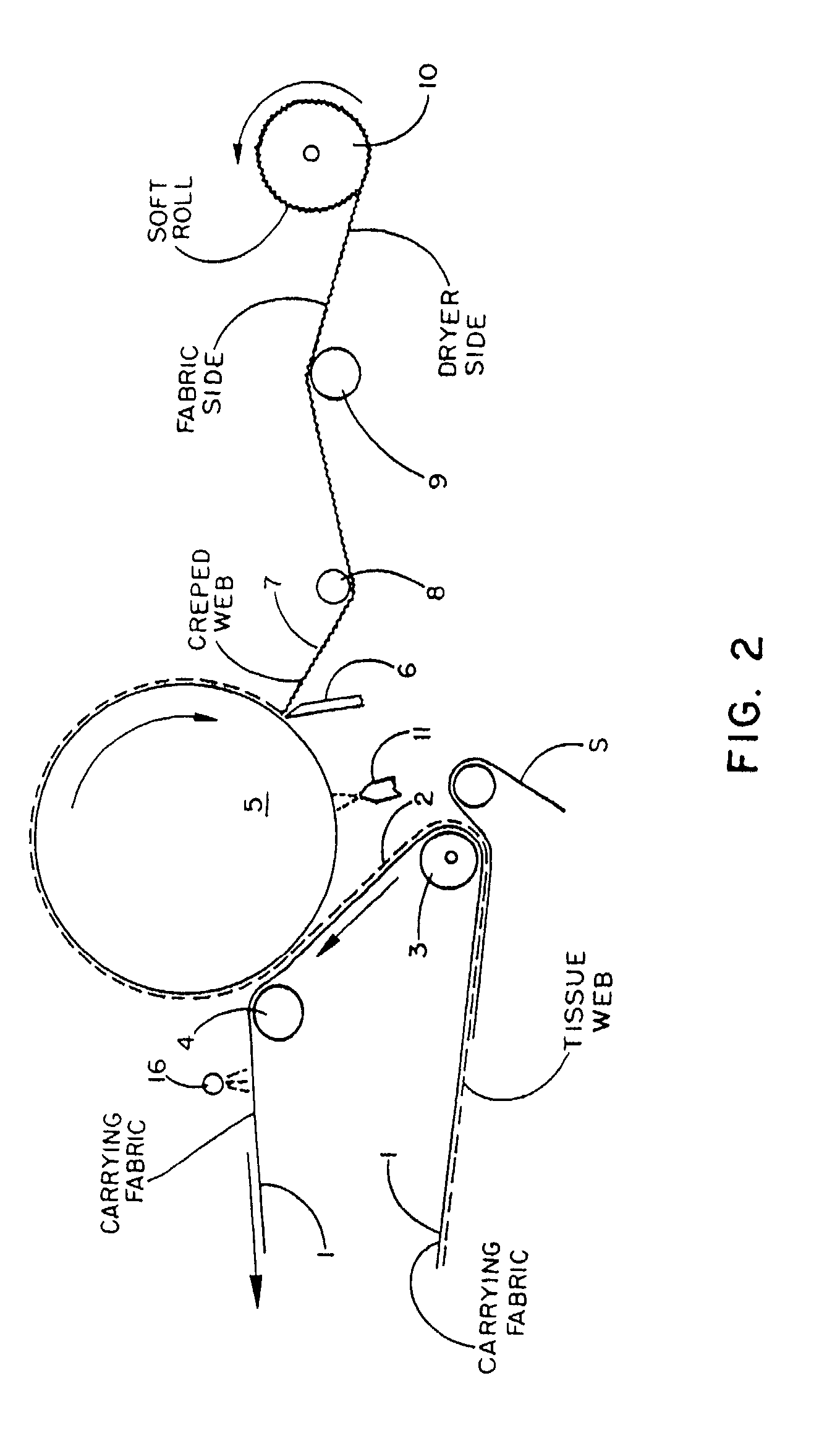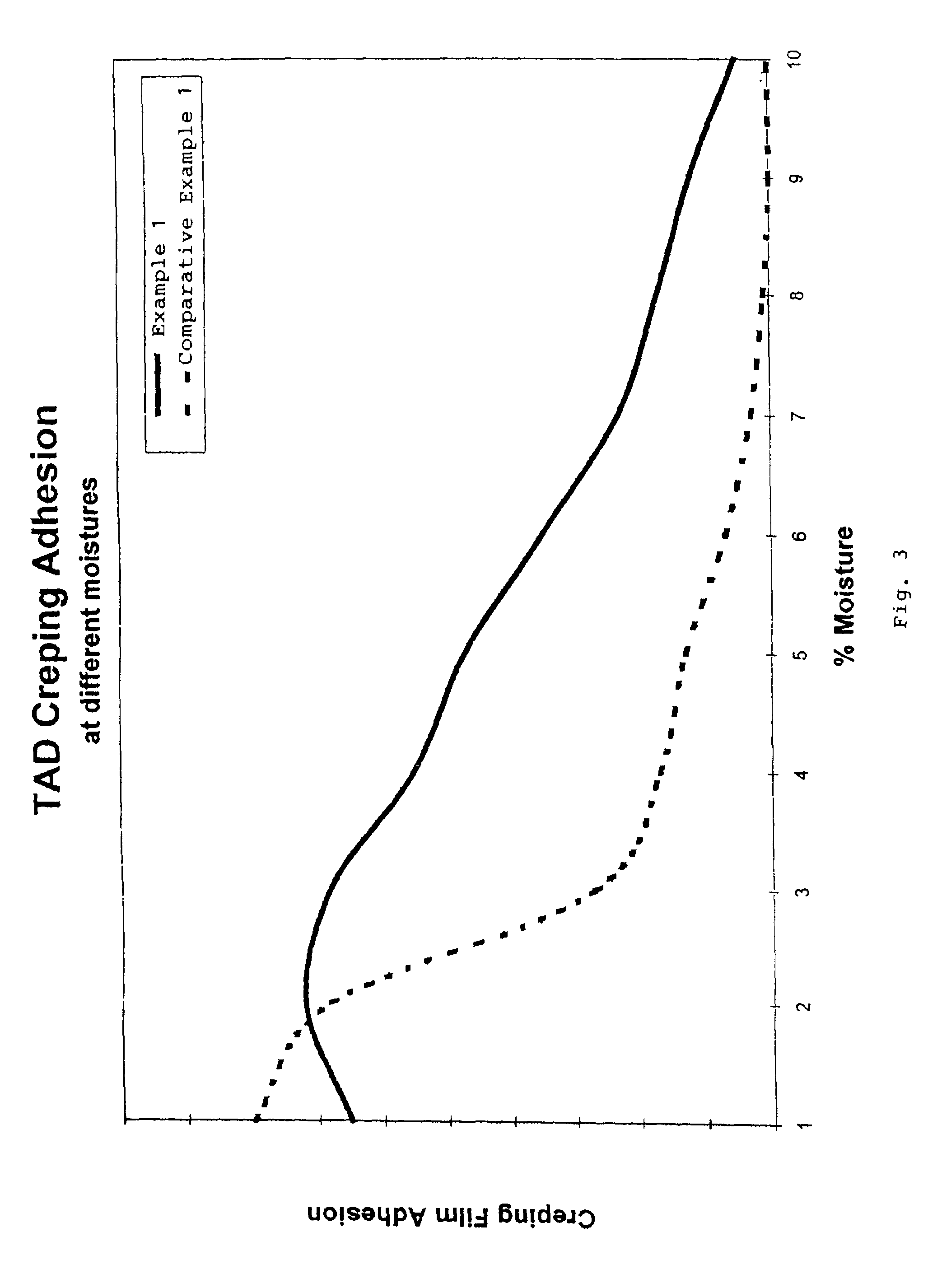Polymeric creping adhesives and creping methods using same
a technology of creping adhesives and polyvinyl alcohol, applied in the field of crepe paper manufacturing, can solve the problems of blocking the roll, limited contact between the web and the dryer surface, and similar problems of polyvinyl alcohol adhesives
- Summary
- Abstract
- Description
- Claims
- Application Information
AI Technical Summary
Problems solved by technology
Method used
Image
Examples
examples
[0064]The Examples described and results shown on the attached sheets and in FIGS. 3 and 4 indicate the superiority of an ionene adhesive formulation used according to the present invention over a conventional adhesive formulation. The results of the comparative tests are shown in Table I below and in the graphs of FIGS. 3 and 4. In the Examples, the Example I formulation included a terpolymer ionene adhesive designated “M”, a water-based polyvinylalcohol formulation designated 2076 available from Buckman Laboratories International, Inc., and Busperse 2098, an oil-based release agent also available from Buckman Laboratories International, Inc. The Comparative Example I formulation contained polyvinylalcohol (PVA), Sorbitol, and Triton X-100 (an alkylphenolethoxylate, 100% active). The machines used included a through-air dryer having felt on the cob side, a debunizer on the table, a moisture in content of from 40 to 50%, a moisture out content of 10%, and a 16 foot diameter. Also us...
PUM
| Property | Measurement | Unit |
|---|---|---|
| Fraction | aaaaa | aaaaa |
| Fraction | aaaaa | aaaaa |
| Fraction | aaaaa | aaaaa |
Abstract
Description
Claims
Application Information
 Login to View More
Login to View More - R&D
- Intellectual Property
- Life Sciences
- Materials
- Tech Scout
- Unparalleled Data Quality
- Higher Quality Content
- 60% Fewer Hallucinations
Browse by: Latest US Patents, China's latest patents, Technical Efficacy Thesaurus, Application Domain, Technology Topic, Popular Technical Reports.
© 2025 PatSnap. All rights reserved.Legal|Privacy policy|Modern Slavery Act Transparency Statement|Sitemap|About US| Contact US: help@patsnap.com



